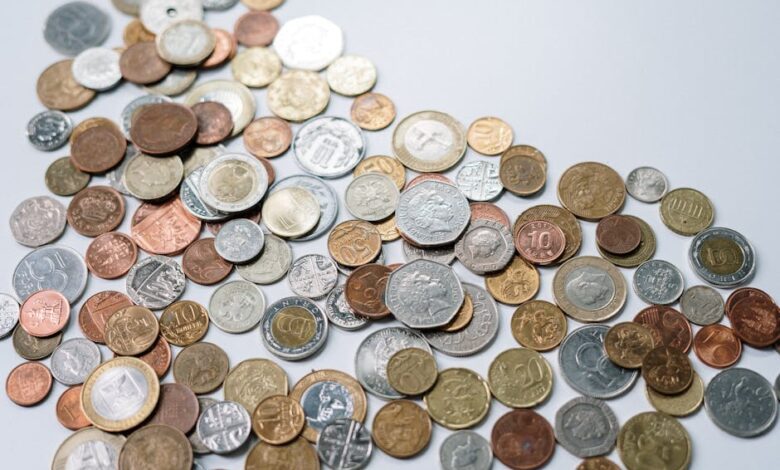Metals in Motion: Analyzing the Interplay of Industrial Demand, Investment Trends, and Economic Indicators

In today’s rapidly evolving economic landscape, the significance of metals extends far beyond traditional uses, intertwining with global market dynamics and investment strategies. This article delves into the multifaceted role of key metals, starting with silver, whose unique properties cater to both industrial applications and investment interests. We will explore how copper prices serve as critical indicators of global economic health and examine the burgeoning impact of green energy technologies on the demand for rare earth metals. Furthermore, we will analyze the investment potential of platinum versus palladium, highlight the importance of metals in diversifying investment portfolios, and discuss how inflation influences the pricing of both precious and industrial metals. Lastly, we will consider the future of aluminum in a sustainable economy and the implications of mining regulations on metal prices. Together, these topics illuminate the intricate relationships between metals and the broader economic framework, providing valuable insights for investors and industry stakeholders alike.
- 1. "Silver's Dual Impact: Industrial Demand Meets Investment Appeal"
- 2. "Copper Prices as Economic Indicators: Understanding Market Signals"
- 3. "Green Technologies and Rare Earth Metals: Navigating the Demand Surge"
1. "Silver's Dual Impact: Industrial Demand Meets Investment Appeal"
Silver plays a unique and multifaceted role in both industrial applications and investment markets, making it a metal of significant interest to investors and industry stakeholders alike. On the industrial side, silver is renowned for its excellent electrical conductivity, thermal conductivity, and reflective properties. These attributes make it indispensable in a variety of sectors, including electronics, solar energy, medical devices, and automotive manufacturing. The growth of renewable energy technologies, particularly solar power, has notably increased silver demand, as silver is used in photovoltaic cells to enhance energy conversion efficiency. As industries innovate and expand, the industrial demand for silver is expected to remain robust, contributing to price stability and potential growth.
Simultaneously, silver holds considerable appeal as an investment asset. Often viewed as a safe-haven commodity, silver attracts investors during times of economic uncertainty or inflation. Its historical role as a store of value, alongside gold, reinforces its position in investment portfolios. Furthermore, silver's lower price point compared to gold makes it more accessible to a broader range of investors, encouraging diversification strategies that include precious metals. The interplay between industrial demand and investment appeal creates a dual impact on silver's market dynamics, where fluctuations in one area can significantly influence the other.
As global economies recover and adapt to changing technological and environmental landscapes, the outlook for silver remains optimistic. The simultaneous push for industrial applications and investment opportunities positions silver as a critical metal in both sectors, potentially leading to increased volatility and opportunity in the marketplace. Understanding this dual impact is essential for investors and industries alike, as it underscores the importance of monitoring trends in both industrial usage and investment sentiment to navigate the complexities of the silver market effectively.
2. "Copper Prices as Economic Indicators: Understanding Market Signals"
Copper prices have long been regarded as a barometer of global economic health due to their sensitivity to changes in industrial demand and economic activity. As a key component in various industries, including construction, electronics, and manufacturing, copper serves as an essential input for a wide range of products. Consequently, fluctuations in copper prices can provide insights into the broader economic landscape.
When economies are thriving, demand for copper typically rises, driving up prices. This increase is often driven by heightened construction activity, manufacturing output, and technological advancements that require copper components. Conversely, during periods of economic downturn or uncertainty, the demand for copper tends to decline, leading to lower prices. This inverse relationship positions copper as a reliable indicator of economic trends.
Analysts and investors closely monitor copper price movements, as they can reflect shifts in consumer confidence, infrastructure spending, and overall industrial growth. For instance, rising copper prices may signal robust economic expansion, prompting businesses to invest in new projects and equipment. In contrast, falling prices could indicate a slowdown, leading companies to reconsider their growth strategies and investment plans.
Moreover, the correlation between copper prices and global economic indicators, such as GDP growth rates and manufacturing indices, underscores copper's role as a leading economic signal. Market participants often use copper price trends to gauge future economic conditions and adjust their investment strategies accordingly. As such, understanding the dynamics of copper prices is crucial for both investors and policymakers seeking to navigate the complexities of the global economy.
3. "Green Technologies and Rare Earth Metals: Navigating the Demand Surge"
The shift towards green technologies has sparked a significant surge in demand for rare earth metals, which are essential for various applications in renewable energy systems, electric vehicles (EVs), and energy-efficient technologies. These metals, including neodymium, dysprosium, and lithium, are crucial for manufacturing high-performance magnets used in wind turbines and electric motors, as well as in batteries for EVs and energy storage systems.
As countries commit to reducing carbon emissions and transitioning to sustainable energy sources, the need for rare earth metals is expected to grow exponentially. The global push for renewable energy and electric mobility has led to increased investments in mining and processing facilities, particularly in regions rich in these resources. However, the extraction and processing of rare earth metals pose environmental challenges, including habitat destruction and pollution, which can complicate their supply chains.
Moreover, geopolitical factors are also at play, as the majority of rare earth metals are currently produced in a limited number of countries, with China being the dominant player. This concentration raises concerns about supply security and price volatility, prompting other nations to seek alternative sources and develop domestic capabilities. As the demand for green technologies continues to rise, striking a balance between sustainable mining practices and the urgent need for these critical materials will be essential for meeting future energy goals and maintaining economic stability. The ongoing evolution in this sector highlights the importance of innovation in recycling and alternative materials, ensuring that the demand for rare earth metals can be met sustainably.
In conclusion, the intricate dynamics of metals in both industrial and investment markets reveal a multifaceted landscape influenced by various factors. Silver stands out with its unique position as both a vital industrial component and a sought-after investment asset, reflecting broader economic trends. Similarly, copper prices serve as a barometer for global economic health, offering insights into market confidence and growth. The rise of green energy technologies underscores the increasing demand for rare earth metals, highlighting the critical role these materials play in the transition to a sustainable future.
Furthermore, the ongoing debate between platinum and palladium investments illustrates the need for informed decision-making in the precious metals market, especially as inflation continues to shape price trajectories. The strategic inclusion of metals in investment portfolios not only provides diversification but also serves as a hedge against economic uncertainty. As we look towards the future, the role of aluminum in a sustainable economy becomes increasingly significant, driven by its lightweight properties and recyclability.
Lastly, mining regulations will undoubtedly continue to impact metal prices, as they balance environmental concerns with the need for resource extraction. Navigating this complex interplay will be essential for investors and industries alike. As the global economy evolves, the importance of understanding these trends and their implications for metal markets cannot be overstated, making it crucial for stakeholders to stay informed and adaptable in this ever-changing landscape.





